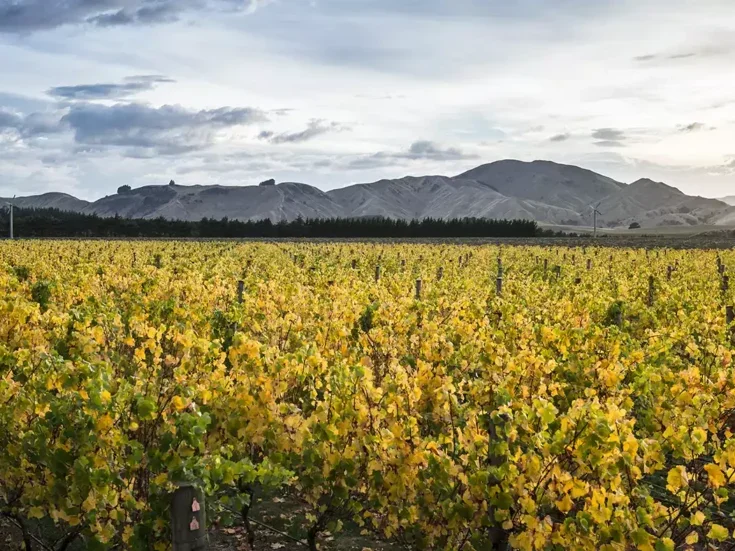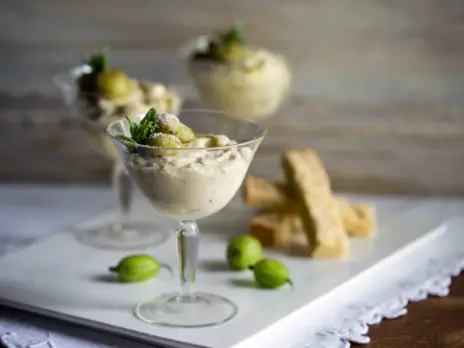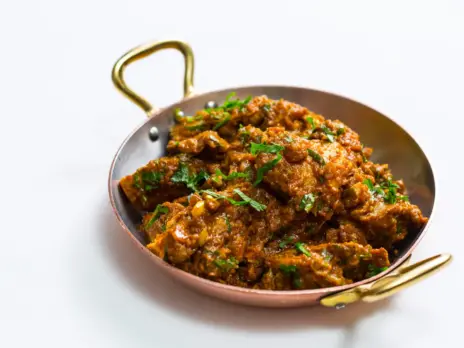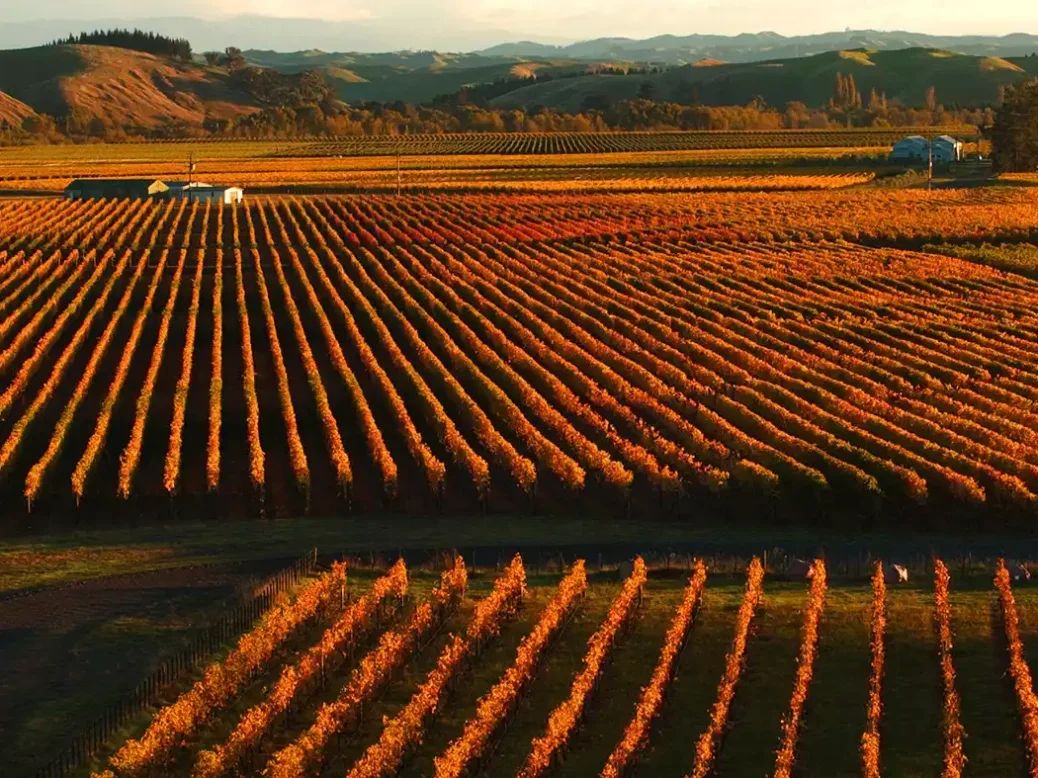
Once known as the place on the planet that first sees the sunrise every day, Hawke’s Bay is now far more famous for its wines. It is second in size to Marlborough, and vines were first planted here in 1851, but stardom has been a much more recent achievement.
Most think of this as a red-wine region, though whites dominate plantings: Chardonnay with 1,060ha (2,620 acres); Sauvignon Blanc with 1,011ha (2,450 acres), Merlot as the most popular red with 975ha (2,410 acres), and Pinot Gris with 676ha (1,670 acres). Syrah has been increasing in recent years, along with its reputation, but is still only 343ha (848 acres), with around 160ha (395 acres) of that in the subregion known as the Gimblett Gravels. That is incrementally increasing annually, usually at the expense of Cabernet Sauvignon. Hawke’s Bay in total represents some 85% of all the Syrah planted in New Zealand. Whites may dominate plantings, but Hawke’s Bay is New Zealand’s most important red region (though Pinotphiles will undoubtedly disagree).
Gimblett Gravels is the region’s most famous subregion and possibly the youngest wine-producing district in the world. It was created when the Ngaruroro River flooded in 1867 and changed course, revealing around 800ha (1,977 acres) of gravel, sitting just 100ft (30m) above sea level. The story has been told many times, but here follows a brief update. Gimblett Gravels is the only wine region in the world demarcated by soil type. (It is also a few degrees warmer than the surrounding Hawke’s Bay.) Although effectively fully planted now, and perhaps the most valuable vineyard land in New Zealand, for many years it was pretty much seen as unlovable rubbish, land that could not be given away. More than 1ha (2.5 acres) was needed to feed a single sheep—so, it was given over to drag racing, warehouses, and rifle ranges. Much was purchased with the intent of using it as a quarry, but in the late 1980s, local winemakers were beginning to understand the potential. A tough fight followed, largely led by Alan Limmer of Stonecroft, who planted the first Syrah here in 1981. (He managed to save ten vines, destined for the rubbish tip, from the local research center.) Eventually, vineyards won out over quarries.
Winemakers at Gimblett Gravels came up with a brilliant concept for promoting their wines: the Annual Selection. An independent judge—it has been Andrew Caillard MW since its inception more than a decade ago—selects the top dozen reds from the vintage. The split between Bordeaux blends and Syrah varies from year to year and wineries are limited as to how many they can submit. The Dozen are then sent to select critics around the world (see Michael Schuster on the 2010 Syrah Selection, WFW 46, 2014, pp.74–77). This worked so well that Hawke’s Bay Winegrowers expanded on the concept, and they now do the same for the entire region with Chardonnay (see Michael Schuster on the inaugural 2020 Chardonnay Collection, WFW 73, 2021, pp.92–94). It is beyond me why many more regions around the world have not adopted the concept, and I greatly enjoyed trying both Dozens from 2021—an exceptional vintage.
A trio of world-class Syrah producers
After this auspicious start, we focused on three local operations: Craggy Range, Trinity Hill, and Bilancia. With the exception of some brilliant Pinot Noir produced elsewhere in the country, it is the world-class Syrah produced by these wineries that can claim to be New Zealand’s greatest reds.
Craggy Range was co-founded by Steve Smith who, when I first met him, was standing in an open field in the middle of the Gravels, arms whirling, telling me that there would be a state-of-the-art winery over there and world-class vineyards here. I’ll confess I thought he was a bit mad—it was easy to see why people thought the Gravels so worthless before vines were planted. He then took me to a makeshift shed, doubling as their laboratory, and started waving a test tube about, as he raved about Syrah. In New Zealand? I thought the bloke was certifiable. And then we tasted it. The exuberance and flavor in this very young sample completely changed my views on New Zealand wine and its potential. Of course, 25 years later, we now see that potential realized.
Not only New Zealand wine but Craggy Range itself has come a long way since then. Steve moved on (he now runs Smith & Sheth, which has had a very good start but is poised to produce its best wines in years to come), and at the end of last year it promoted Ben Tombs to chief winemaker.
Ben sees natural ripeness as the key to his wines, with vine age giving ripeness of tannins at an earlier stage and with much lower levels of alcohol. That first test tube sat at around 15%, but now we see the same richness, joy, and flavors appearing with the wine at only 13%. The point was also made that the stonier the vineyard, the earlier it ripens. The difference between a $40 bottle of wine and one worth $140 may be only a few feet. (Of course, winemakers in the great regions of Europe have known this for eons). Craggy Range’s Le Sol is a perennial favorite (though certain friends insist that its Merlot-dominant Sophia reigns supreme).
Trinity Hill, like all of these wineries, makes excellent Chardonnay, but it is with the reds that it truly comes into its own. The Gimblett, a Cab Franc-dominated Bordeaux blend, is a contender for the best value of its style from anywhere on the planet, coming in at just $40. In many respects, it is a wine that personifies the New Zealand wine industry: superb quality and undervalued. It is the Homage, however, that deserves the highest praise.
We saw a number of Homage vintages. The 2014 was all spices and pepper; 2015 plush and intense, with chocolate and coffee beans; 2016 poise and structure, with gorgeous black cherries, aniseed, and pepper; 2017 fragrant and spicy; 2018 taut, focused, and superbly structured; 2019 one of the great Homages, power and refinement and a 20-year future—for me, 98 points.
At a different stage, we looked at a few others. 2020 was all coiled power and incredible length; 2021 was 100% foot-stomped, the result a force of nature. (The 2019, 2020, and 2021 are all considered to have been brilliant vintages for Hawke’s Bay as a whole, with 2021 perhaps the best of all.)
We also had a chance to see what I have long considered one of the very best New Zealand wines: the 2010 Homage. It was as good as ever—complex, with tobacco leaves, dried herbs, red fruits, a flick of orange rind, immaculate balance, and extraordinary length. I waver between 99 and 100 for this wine. Take your pick.
As well as being chief winemaker at Trinity Hill, Warren Gibson keeps a private project, Bilancia, with his wife Lorraine Leheny. Bilancia’s La Collina ($165) is the smallest production of any of these wines, has cult status, and can be very hard to find. Warren provided one of the treats of the trip, taking us back to the beginning with a full vertical. He and Lorraine began planting the La Collina vineyard in 1998, on the other side of the hill to Trinity Hill winery. There is co-fermentation with a small proportion of Viognier skins, and maturation is in French barriques for up to two years. None was made in the lesser vintages of 2011, 2012, 2017, 2022, or 2023.
The first, from the fantastic 2002 vintage, is the only wine in the series not to see any influence from Viognier. Warren sees it as his most Rhône-like, and it is still drinking beautifully. The next superstar is 2006, all truffles and cherries and excellent length, with at least another dozen years ahead of it. The 2007, 2008, and 2009 all impressed, while the 2010 is close to a match with the Homage from the same vintage; it and the 2013 were the pick of the mature wines. 2014, 2015, 2016, 2018, and 2019 were all very solid, impressive efforts, but the standard soars with the 2020 and 2021; these are two scintillating wines.
I mentioned how undervalued the top New Zealand wines are. All three are around $150. These wines sit comfortably with the best of the Rhône and Australia, though obviously different in style. Think of the prices for Grange, Hill of Grace, the top Guigals, Henri Bonneau, Pierre Gonon, and Rayas. How could anyone resist these Kiwis?
Whether you prefer the Bordeaux blends or Syrah, Hawke’s Bay is New Zealand’s pinnacle red-wine district (yes, leaving aside Pinot Noir). It also produces exemplary Chardonnay, surely the country’s greatest white.
It is also worth noting that not all of the top Hawke’s Bay producers are found in the Gimblett Gravels region. Te Mata is an obvious exception, making some of the nation’s best wines. (Unfortunately, it apparently chose not to participate in the New Zealand Fine Wine Story project, but nevertheless, it certainly deserves mention.)
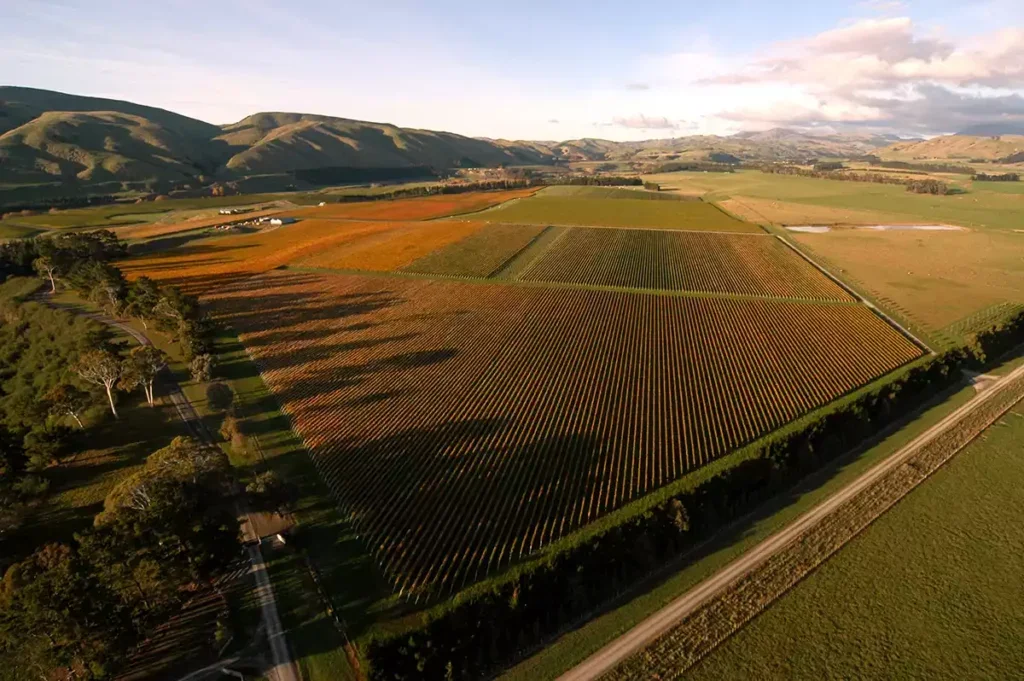
Hawke’s Bay Syrah: A selection
Craggy Range Le Sol Syrah 2021 ($145)
Great intensity here: cassis, blackberries, new leather, mulberries. Saturated flavors, silky tannins, generosity, and great length. 20 years ahead. | 98
Smith & Sheth Cru Omaha Syrah 2021 ($80)
Curiously, this includes 3% Tannat. Plush, dense, but dancing. Coffee beans, black olives, and a dusting of cocoa powder. Seamless and lingering. This is the best S&S wine I have seen to date. | 96
Trinity Hill Homage 2021 ($150)
Mulberries, blueberries, chocolate, coffee beans, and the creamiest of textures. Majestic length, a 20-years-plus proposition. A great Syrah. | 98
Bilancia La Collina 2021 ($160)
Red fruits, redcurrants, red apples, aniseed, a hint of oak evident, though
not intrusive. Silky tannins and a lingering finish. A superb Syrah from a great vintage. | 97
Gimblett Gravels Annual Selection 2021
I have seen every selection since the project’s inception, but none has topped 2021. There were six Merlots and six Syrahs, of which my top two wines were the Le Sol and the Homage. My top two blends were Craggy Range’s Sophia and Mission Estate’s Jewelstone Antoine. But there is not a wine in the Dozen that I would not happily drink.
The Hawke’s Bay Annual Chardonnay Collection 2021 was selected by Cameron Douglas MS, as it is every year. The 2021 Collection was the third, but the 2022s have subsequently been made available. While the winery can be anywhere, the wines must be made from 100% Hawke’s Bay fruit. A winery can enter as many wines as it likes—56 were submitted—but can have no more than two in the final Collection.
The wines that stood out included the Clearwater Estate Reserve Chardonnay, creamy but full-flavored; the Church Road Single Vineyard Terraces, all concentration and complexity; Esk Valley’s Seabed Chardonnay, with its grapefruit and honey notes; and Trinity Hill’s Single Vineyard 125 Gimblett Chardonnay, which evolved in the glass every time one returned to it. Again, I would happily drink any of the Dozen.

